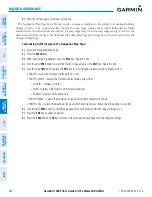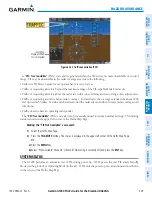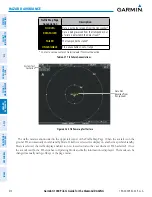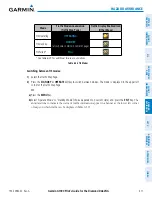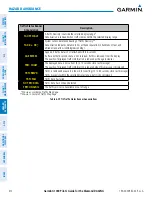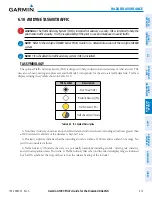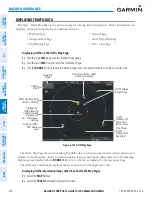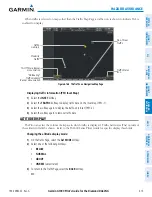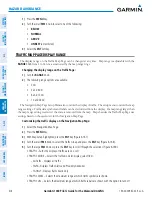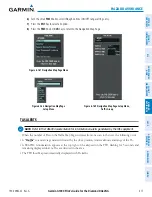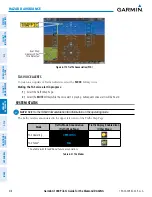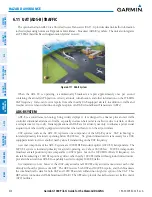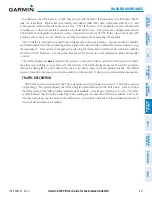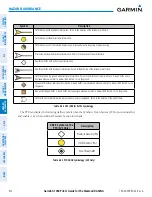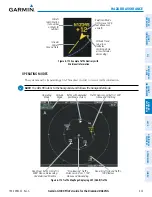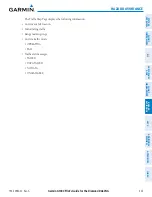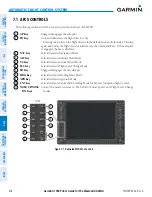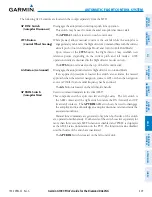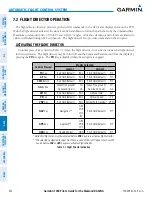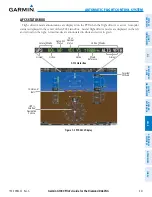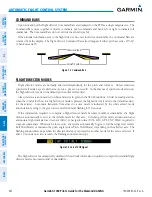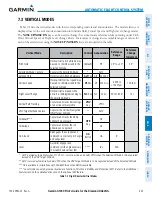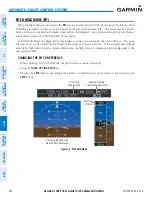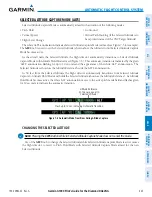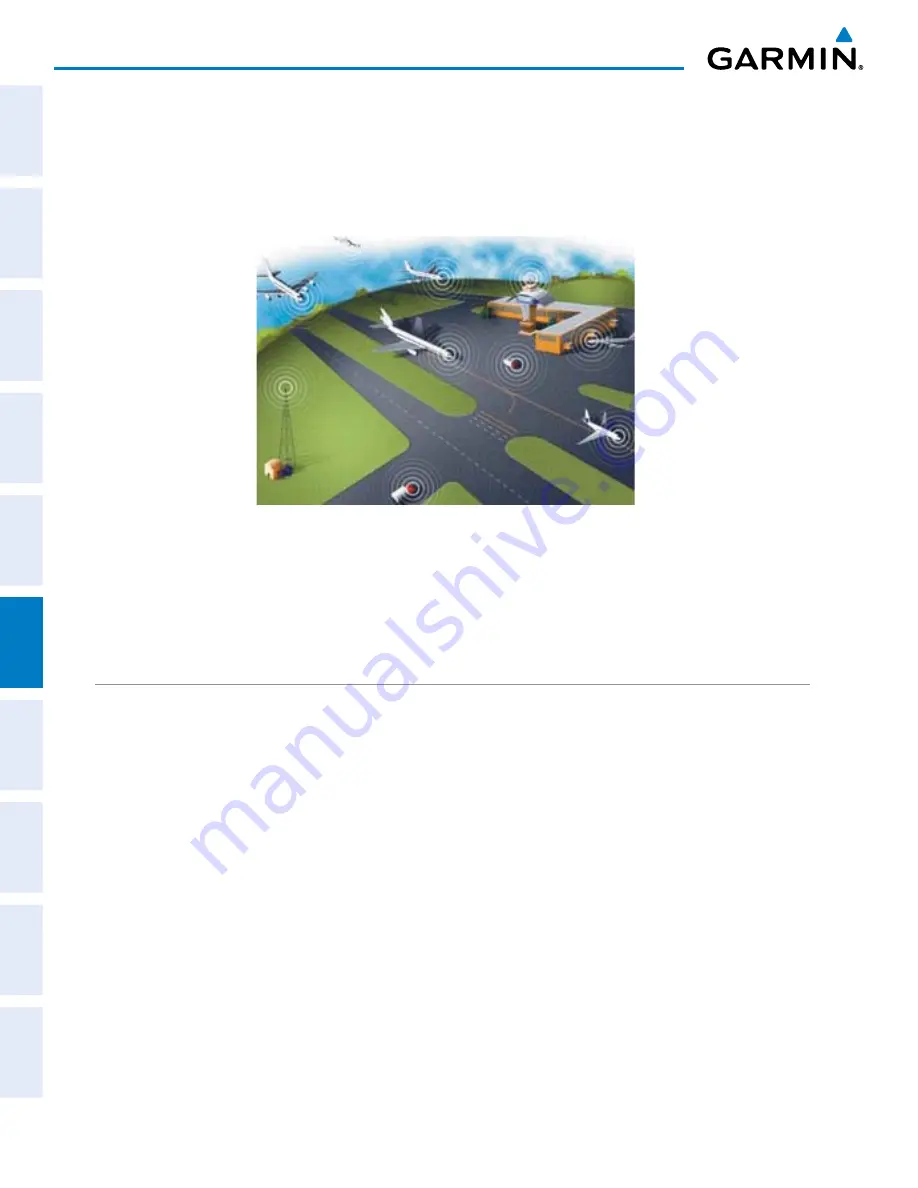
Garmin G1000 Pilot’s Guide for the Diamond DA42NG
190-00-00962-02 Rev. A
420
HAZARD AVOIDANCE
SY
STEM
O
VER
VIEW
FLIGHT
INSTRUMENTS
EIS
AUDIO P
ANEL
& CNS
FLIGHT
MANA
GEMENT
HAZARD
AV
OID
ANCE
AFCS
ADDITIONAL FEA
TURES
APPENDICES
INDEX
6.11 UAT (ADS-B) TRAFFIC
The optional Garmin GDL 90 is a Universal Access Transceiver (UAT). It provides data link traffic information
to the displays using Automatic Dependent Surveillance - Broadcast (ADS-B) symbols. The unit also integrates
a GPS SBAS (Satellite Based Augmentation System) receiver.
Figure 6-171 ADS-B System
When the GDL 90 is operating, it automatically broadcasts a report approximately once per second
containing the aircraft’s GPS position, velocity, altitude, identification, and other information on the 978 MHz
UAT frequency. It also can receive reports from other nearby UAT-equipped aircraft, in addition to traffic and
weather services when within line-of-sight reception of ADS-B Ground-Based Transceivers (GBTs).
ADS-B SYSTEM
ADS-B is a surveillance technology being widely deployed. It is designed to enhance pilot and air traffic
controller situational awareness of traffic, especially in areas where radar is ineffective due to terrain or where
it is impractical or too costly. Initial applications of ADS-B are for advisory use only, to enhance a pilot’s visual
acquisition of other nearby equipped aircraft either when airborne or on the airport surface.
UAT systems, such as the GDL 90, represent one component of the ADS-B system. UAT technology is
intended primarily for aircraft operating below 18,000 feet. No ground infrastructure is necessary for a UAT-
equipped aircraft to detect another nearby aircraft transmitting on the UAT frequency.
A second component of the ADS-B system are 1090 MHz Extended Squitter (1090 ES) transponders. The
1090 ES system is intended primarily for aircraft operating at or above 18,000 feet. 1090 ES transponders
broadcast aircraft position reports comparable to UAT reports, but on the 1090 MHz (Mode S) frequency. An
aircraft broadcasting a 1090 ES report may detect other nearby 1090 ES traffic without ground infrastructure,
provided the aircraft has ADS-B In capability needed to display 1090 ES traffic.
It is important to note, however, that UAT-only aircraft and 1090 ES-only aircraft cannot detect each other
directly without the presence of a GBT. The GBT receives both UAT and 1090 ES reports, and then broadcasts
the combined traffic data for both UAT and 1090 ES aircraft within line-of-sight reception of the UAT. This
GBT service is known as ADS-Rebroadcast (ADS-R). The GBTs also provide this traffic data to air traffic control
(ATC) facilities.

